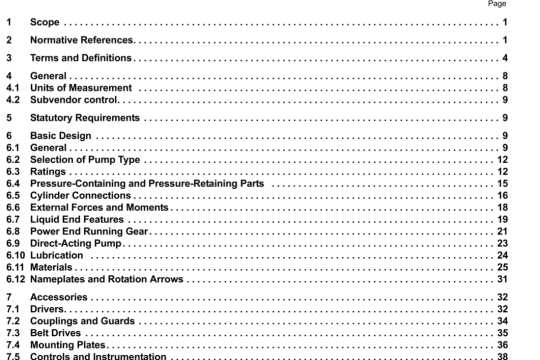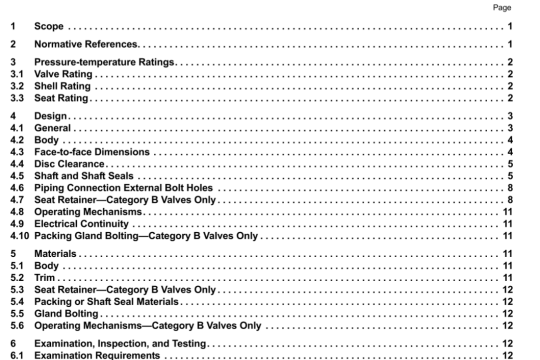API 625:2010 pdf download
API 625:2010 pdf download.Tank Systems for Refrigerated Liquefied Gas Storage.
3.2.2.16
warm product vapor container
Parts of a tank system that contain product vapor, but are not expected to function after exposure to refrigerated product temperature. (This includes roofs over suspended insulation deck and the outer container of a double wall, open top single containment tank system.)
3.2.3 Levels and Volumes
3.2.3.1
design liquid level
Maximum liquid level that will be experienced during operation of the tank. This is used for the static shell thickness determination.
3.2.3.2
maximum liquid capacity
The total volume between the design liquid level and the tank bottom. (This is also referred to as total liquid capacity in API 620.)
3.2.3.3
maximum normal operating capacity
The volume between the maximum normal operating level and the tank bottom.
3.2.3.4
maximum normal operating level
Maximum liquid level that will be experienced during normal operation of the tank.
3.2.3.5
minimum normal operating level
Minimum liquid level that will be maintained during normal operation of the tank.
3.2.3.6
net working capacity
The volume between the maximum normal operating level and minimum normal operating level.
3.2.3.7
overfill protection margin
Capacity (tank height or volume) between the maximum normal operating level and the design liquid level (see
6.3).
3.2.3.8
seismic freeboard
The design height above the maximum normal operating level to minimize or prevent overflow or damage to the roof due to sloshing of the liquid contents during a seismic event.
3.2.4 Process
3.2.4.1
boil-off
The process of vaporization of refrigerated product by heat conducted through the insulation surrounding the tank.
3.2.4.2
design pressure
The maximum gauge pressure permissible in the vapor space above the product of a tank system in its design condition.
32.4.3
flame spread index
A number, obtained according to NFPA 255, which is a comparative measure, derived from visual measurements, of the spread of flame vs time.
3.2.4.4
hazard
An event having the potential to cause harm, including ill health and injury; damage to property, product or the environment; production losses; or increased liabilities.
3.2.4.5
minimum design temperature (design metal temperature)
See 6.4.6.
3.2.4.6
purging
The replacement of one gas/vapor by another in an enclosed tank system by displacement, by dilution, by diffusion or by combinations of these actions.
3.2.4.7
rollover
Uncontrolled mass movement of stored liquid, correcting an unstable state of stratified liquids of different densities and resulting in a significant evolution of product vapor.
3.2.4.8
set pressure
The gauge pressure at which the pressure relief device first opens.
3.2.4.9
set vacuum
The gauge pressure at which the vacuum relief device first opens.
3.2.5 Seismic
3.2.5.1
aftershock level earthquake
ALE
See 6.5.2.
3.2.5.2
operating basis earthquake
OBE
operating level earthquake
OLE
See 6.5.2.
3.2.5.3
safe shutdown earthquake
SSE
contingency level earthquake
CLE
See 6.5.2.




